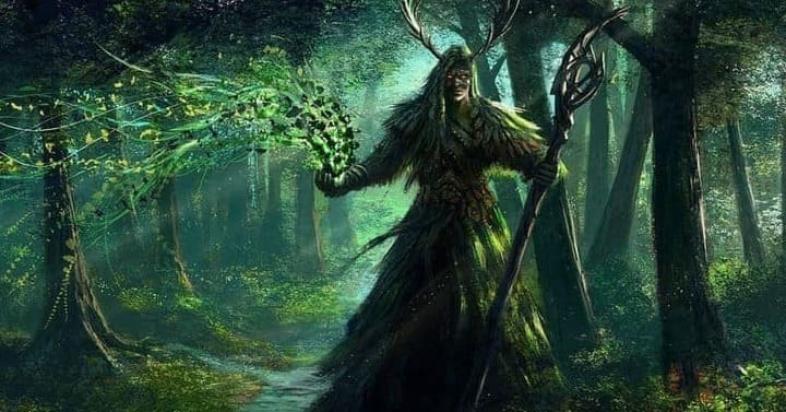Antidote Crack a set of rich dictionaries and detailed language guides. Antidote 10 Crack free. download full Version 2020. It has a large list of words and supports the latest word. If your native language is English and you want to learn French then Antidote 10 is the best environment which helps you in learning another language very easily. This whitepaper provides an introduction to Apache Druid, including its evolution, core architecture and features, and common use cases. Founded by the authors of the Apache Druid database, Imply provides a cloud-native solution that delivers real-time ingestion, interactive ad-hoc queries, and intuitive visualizations for many types of event. Names inspired by food seems pretty popular for the tauren druid: Corndrew, Burntsteak, Applepie, etc. He would ride into battle like a ^&.!ing maniac, chopping people's heads off all over the place like some kind of one-man French Revolution on crack.

A remarkable hike that goes through some of the most interesting and extraordinary features in Canyonlands National Park.
Trail description
The trail immediately begins climbing up the southeast side of the canyon, passing through a narrow crack and up a set of sandstone steps. After hiking up a short, steep uphill, sandstone buttes and neighboring canyons come into view. The Abajo Mountains, called the Blue Mountains by many local residents, are visible far to the southeast.
The sandy trail wanders across a bench peppered with piñon and juniper trees as well as blackbrush, Mormon tea, clumps of grass, and patches of prickly pear cactus. At about 0.3 mile, you get your first view of the Needles, the highly fractured and eroded pinnacles in the distance. Next, the trail wraps around the left side of a group of sandstone knobs where it goes through a small pass into a neighboring basin. Looking right, you can see the Wingate Sandstone cliffs in the far distance that create the Island in the Sky, the northernmost part of Canyonlands National Park.
The trail drops into an open park with extensive cryptobiotic soils and heads towards another group of rounded sandstone monoliths. About 1.5 miles from the trailhead—just before reaching the monoliths—you reach the junction with the trail from Squaw Flat Campground. Continue straight and climb up a short section of slickrock, through another pass, and across another sandy park. The trail bears left and enters a long, narrow crack about 2 feet wide and 50 feet long. The crack widens out and you find yourself in a remarkably different landscape high on the east wall of Elephant Canyon. The first of three backcountry campsites in Elephant Canyon (EC1) is visible to the right on the canyon floor. The trail switchbacks down to the streambed, where you reach the junction with the Chesler Park Trail and the Devil’s Kitchen Campground. Go left on the trail to Druid Arch up the west side of the streambed.
Elephant Canyon
While the first part of the hike crossed open parks and wandered between sandstone knobs, the rest of the hike to Druid Arch follows the bottom of Elephant Canyon, which provides a radically different experience. After a couple hundred yards, the trail drops into the streambed and crosses a purple/black layer of resistant rock. The canyon opens up a bit and the walking is flat and easy. About a half mile from the last junction, the trail crosses the canyon and leaves the streambed. If you are camping at EC2, look for a trail on the right that climbs some rock ledges. The campground is well above the canyon floor with some sublime views, plus a large slickrock slab that provides a non-sandy area for sitting and cooking. Within a few hundred feet you reach another junction. The trail on the left goes back to the Squaw Flat Campground, but you continue up the sandy bottom of Elephant Canyon.
Past this junction, EC3 is located on the right side of the canyon about 0.2 mile farther. This campground also has great views (like almost anywhere within Elephant Canyon), and it sits on a sand and rock ledge with a couple of spots to pitch tents. About 0.3 mile past EC3 you reach another trail junction, this time from Chesler Park, that drops down the right side of the canyon. At this point you have come 3.4 miles from the trailhead, and it is about 2 more miles to Druid Arch.

Upper Elephant Canyon

The last two miles of Elephant Canyon are exceptional, even in an area that is already remarkable. The Needles become more apparent, framed by the walls of the canyon, and two rock formations with towers, turrets, and varnish-streaked walls come into view on the left side of the canyon. These formations are particularly beautiful in early morning light. The canyon opens up a bit and curves to the left, bringing into view a prominent sandstone bluff that towers above the canyon. Then the canyon narrows again, and the trail climbs up the left side to a ledge (look for rock cairns), which the trail follows upcanyon, bypassing a pouroff and large plunge pool.
Next you reach a fork in the canyon, and the trail goes left up a fairly steep, slickrock-bottomed chute that climbs to an upper level defined by broad sandstone benches. A large amphitheater ringed by a section of the Needles comes into view. The trail bears left and reaches a six-foot-high steel ladder. At this point you might be wondering where the arch is, but fear not, it is close by. After climbing the ladder, go left up another slickrock-bottomed drainage and climb the debris slope above it.
Voila, there’s Druid Arch rising before you, roughly 450 feet high! Unlike many arches in this country, it looks more like a pile of huge stones reminiscent of the rocks of Stonehenge; indeed, it is this similarity that caused early explorers to give it such an unusual name; the name was officially adopted in 1963. Relax and enjoy the arch and the spectacular view back down Elephant Canyon, which appears to be solid slickrock surrounded by red and white cliffs of Cedar Mesa Sandstone. Return the way you came.
Druid Craft Tarot
Directions


Druid Crafts
Take Highway 191 south out of Moab, at about 40 miles turn west (right) onto UT 211, go another 34 miles to the Needles visitor center. Continue to the Squaw Flat Campground road, turn left on it and go about a quarter mile to the gravel road that goes right to Elephant Hill. Follow the road to the end (2.8 miles) where you will find a large parking lot with pit toilets and trash cans. Backcountry camping requires a permit. Find out how to navigate the permit system ›
